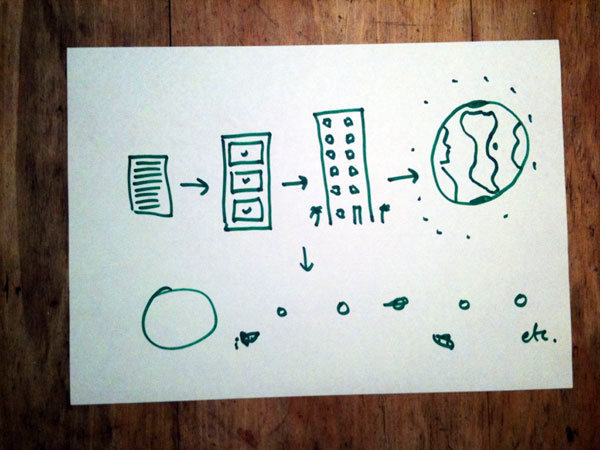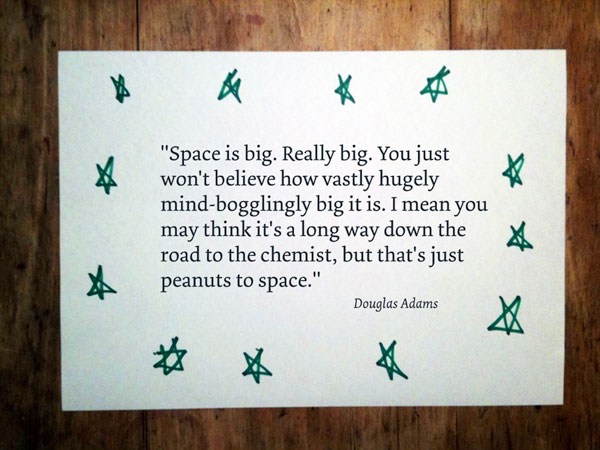I try to keep this blog targeted and on topic. So even though I may be thankful for the song of the tinniest sparrow at sunrise, I'll save you from all that. It's hard to tie scalability and the giving of thanks together, especially as it sometimes occurs to me that this blog may be a self-indulgent waste of time. But I think I found a sentiment in A New THEORY of AWESOMENESS and MIRACLES by James Bridle that manages to marry the topic of this blog and giving thanks meaningfully together:
I distrust commercial definitions of innovation, and particularly of awesomeness. It’s an overused term. When I think of awesomeness, I want something awe-inspiring, vast and mind-expanding.
So I started thinking about things that I think are awesome, or miraculous, and for me, it kept coming back to scale and complexity.

We’re not actually very good about thinking about scale and complexity in real terms, so we have to use metaphors and examples. Douglas Adams writes somewhere about how big the Hitchhiker’s Guide to the Galaxy actually is—imagine a sheet of paper, then a filing cabinet full of sheets of paper, then a room full of filing cabinets, then a skyscraper full of rooms, then a city full of skyscrapers, a country, a planet, a solar system and so on. I couldn’t find the exact quote, so his thoughts on space will have to do:

Just wonderful. I especially love the quote So I started thinking about things that I think are awesome, or miraculous, and for me, it kept coming back to scale and complexity. This perfectly sums up why the topic of scalability is so endlessly diverting. It can take you anywhere you want to go and everything eventually ends up back again.
Thanks for reading and...
Happy Thanksgiving!
 Tuesday, December 15, 2009 at 8:31PM
Tuesday, December 15, 2009 at 8:31PM 















